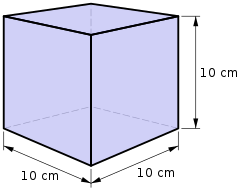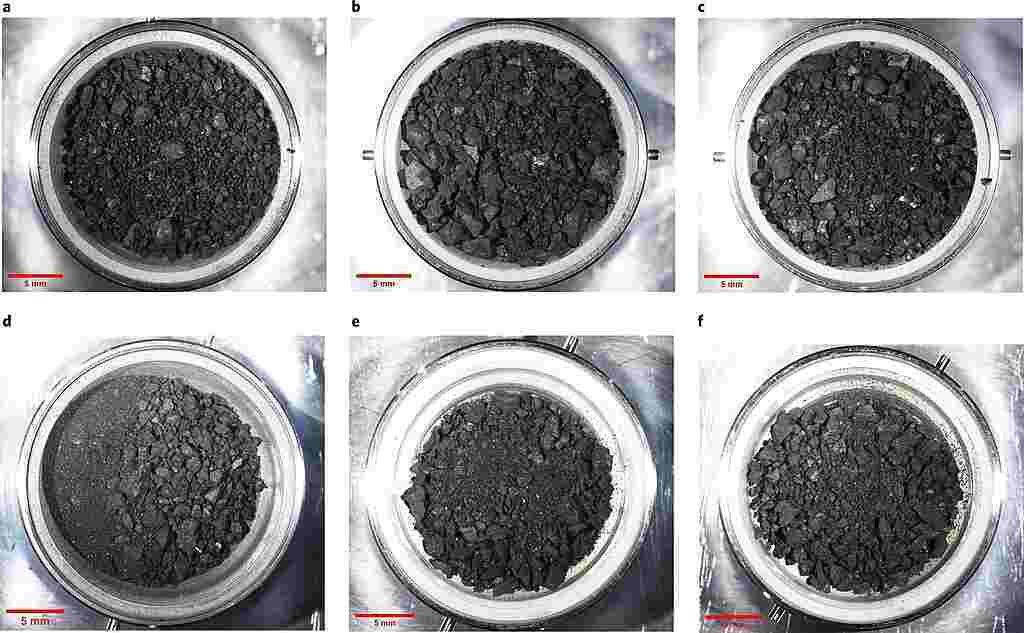SI Units
Standards and Units (abbreviated as SI Units): Laws of physics are expressed in terms of physical quantities such as time, force, temperature, density and numerous other parameters. Physical quantities are often divided into fundamental and derived quantities. Derived quantities arc those whose definitions are based on other physical quantities, e.g., speed, area, density, etc. Fundamental quantities are not defined of other physical quantities, e.g., length, mass and time.
The International System of Units, inspired by the metric system, is the most widely used system of units in the world; but it is not officially used in the United States, Liberia, and Burma.
Fundamental SI Units
| Base quantity | Name | Symbol |
|---|---|---|
| Length | Meter | M |
| Mass | kilogram | kg |
| Time | Second | S |
| Electric current | Ampere | A |
| ThermodynamicTemperature | Kelvin | K |
| Amount of substance | Mole | mol |
| Luminous intensity | Candela | cd |
Derived SI Units
Other quantities, called derived quantities, are defined in terms of the seven base quantities via a system of quantity equations. The SI derived units for these derived quantities are obtained from these equations and the seven SI base units. Examples of such SI derived units are given in the following table, where it should be noted that the symbol 1 for quantities of dimension 1 such as mass fraction is generally omitted.
Examples of SI Derived Units
| SI derived unit | ||
|---|---|---|
| Derived quantity | Name | Symbol |
| Area | Square meter | m2 |
| Volume | Cubic meter | m3 |
| Speed, velocity | Meter per second | m/s |
| Acceleration | Meter per second squared | m/s2 |
| Wave number | Reciprocal meter | m-1 |
| Mass density | Kilogram per cubic meter | Kg/m3 |
| Specific volume | Cubic meter per kilogram | m3/kg |
| Current density | Ampere per square meter | A/m2 |
| Magnetic field strength | Ampere per meter | A/m |
| Amount-of-substance concentration | Mole per cubic meter | mol/m3 |
| Luminance | Candela per square meter | cd/m2 |
| Mass fraction | Kilogram per kilogram, which may be represented by the number 1 | kg/kg=1 |
For ease of understanding and convenience, 22 SI derived units have been given special names and symbols, as shown in the following table.
SI derived units with special names and symbols
| Derived quantity | Name | Symbol | Expression in terms of other SI units |
|---|---|---|---|
| Plane angle | radian | rad | – |
| Solid angle | steradian | sr | – |
| Frequency | hertz | Hz | – |
| Force | newton | N | – |
| Pressure, stress | pascal | Pa | N/m2 |
| Energy, work, quantity of heat | joule | J | N.M |
| Power, radiant flux | watt | W | J/s |
| Electric charge, quantity of electricity | coulomb | C | – |
| Electric potential difference, electromotive force | Volt | V | W/A |
| Capacitance | farad | F | C/V |
| Electric resistance | ohm | Ω | V/A |
| Electric conductance | siemens | S | A/V |
| Magnetic flux | weber | Wb | V.s |
| Magnetic flux density | tesla | T | Wb/m2 |
| Inductance | henry | H | Wb/a2 |
| Celsius temperature | degree Celsius | oC | – |
| Luminous flux | lumen | lm | cd.sr |
| Illuminance | lux | lx | lm/m2 |
| Activity (of a radionuclide) | becquerel | Bq | – |
| Absorbed dose, specific energy (imparted), kerma | gray | Gy | J/kh |
| Dose equivalent | sievert | Sv | J/kg |
| Catalytic | katal | kat |
Some commonly used units other than SI units
- Light years: the light year is a unit of length and is equal to the distance travelled by light in one year. It is used to express large astronomical distance like the distance between the sun and earth etc. 1 light year = 9.46 x 1015m
- An Astronomical Unit (A.U) is the mean distance from the centre of the earth to centre of the sun. 1 A. U = 1.495 x 1011 m.
- F. P. S system is used in Britain, where length is measured in Foots, mass in pounds and time in Seconds.
- In C.G.S system, length is measured in Centimeter, mass in Grams and time in Seconds.
- Barrel is the internationally used unit for measuring the volume of crude oil. 1 Barrel = 159 Litres.
Base Units
The SI base units are the building blocks of the system and all the other units are derived from them.
The base units of the International System are the seven independent units of measurement (or fundamental units) of the International System from which all other units, called derived units, are obtained by dimensional analysis.
These units are assumed to be independent insofar as they make it possible to measure independent physical quantities. However, the definition of a unit may involve that of other units.
| Unit name | Unit symbol | Dimension symbol | Quantity name | Definition |
|---|---|---|---|---|
| second | s | T | time | The duration of 9192631770 periods of the radiation corresponding to the transition between the two hyperfine levels of the ground state of the caesium-133 atom. |
| metre | m | L | length | The distance travelled by light in vacuum in 1/299792458 second. |
| kilogram | kg | M | mass | The kilogram is defined by setting the Planck constant h exactly to 6.62607015×10−34 J⋅s (J = kg⋅m2⋅s−2), given the definitions of the metre and the second. |
| ampere | A | I | electric current | The flow of exactly 1/1.602176634×10−19 times the elementary charge e per second.Equalling approximately 6.2415090744×1018 elementary charges per second. |
| kelvin | K | Θ | thermodynamic temperature | The kelvin is defined by setting the fixed numerical value of the Boltzmann constant k to 1.380649×10−23 J⋅K−1, (J = kg⋅m2⋅s−2), given the definition of the kilogram, the metre, and the second. |
| mole | mol | N | amount of substance | The amount of substance of exactly 6.02214076×1023 elementary entities.[n 3] This number is the fixed numerical value of the Avogadro constant, NA, when expressed in the unit mol−1. |
| candela | cd | J | luminous intensity | The luminous intensity, in a given direction, of a source that emits monochromatic radiation of frequency 5.4×1014 hertz and that has a radiant intensity in that direction of 1/683 watt per steradian. |
| ||||
Derived units
| Name | Symbol | Quantity | In SI base units | In other SI units |
|---|---|---|---|---|
| radian | rad | plane angle | m/m | 1 |
| steradian | sr | solid angle | m2/m2 | 1 |
| hertz | Hz | frequency | s−1 | |
| newton | N | force, weight | kg⋅m⋅s−2 | |
| pascal | Pa | pressure, stress | kg⋅m−1⋅s−2 | N/m2 |
| joule | J | energy, work, heat | kg⋅m2⋅s−2 | N⋅m = Pa⋅m3 |
| watt | W | power, radiant flux | kg⋅m2⋅s−3 | J/s |
| coulomb | C | electric charge | s⋅A | |
| volt | V | electrical potential difference (voltage), emf | kg⋅m2⋅s−3⋅A−1 | W/A = J/C |
| farad | F | capacitance | kg−1⋅m−2⋅s4⋅A2 | C/V |
| ohm | Ω | resistance, impedance, reactance | kg⋅m2⋅s−3⋅A−2 | V/A |
| siemens | S | electrical conductance | kg−1⋅m−2⋅s3⋅A2 | Ω−1 |
| weber | Wb | magnetic flux | kg⋅m2⋅s−2⋅A−1 | V⋅s |
| tesla | T | magnetic flux density | kg⋅s−2⋅A−1 | Wb/m2 |
| henry | H | inductance | kg⋅m2⋅s−2⋅A−2 | Wb/A |
| degree Celsius | °C | temperature relative to 273.15 K | K | |
| lumen | lm | luminous flux | cd⋅sr | cd⋅sr |
| lux | lx | illuminance | cd⋅sr⋅m−2 | lm/m2 |
| becquerel | Bq | radioactivity (decays per unit time) | s−1 | |
| gray | Gy | absorbed dose (of ionising radiation) | m2⋅s−2 | J/kg |
| sievert | Sv | equivalent dose (of ionising radiation) | m2⋅s−2 | J/kg |
| katal | kat | catalytic activity | mol⋅s−1 | |
Notes
| ||||
| Name | Symbol | Derived quantity | Typical symbol |
|---|---|---|---|
| square metre | m2 | area | A |
| cubic metre | m3 | volume | V |
| metre per second | m/s | speed, velocity | v |
| metre per second squared | m/s2 | acceleration | a |
| reciprocal metre | m−1 | wavenumber | σ, ṽ |
| vergence (optics) | V, 1/f | ||
| kilogram per cubic metre | kg/m3 | density | ρ |
| kilogram per square metre | kg/m2 | surface density | ρA |
| cubic metre per kilogram | m3/kg | specific volume | v |
| ampere per square metre | A/m2 | current density | j |
| ampere per metre | A/m | magnetic field strength | H |
| mole per cubic metre | mol/m3 | concentration | c |
| kilogram per cubic metre | kg/m3 | mass concentration | ρ, γ |
| candela per square metre | cd/m2 | luminance | Lv |
| Name | Symbol | Quantity | In SI base units |
|---|---|---|---|
| pascal-second | Pa⋅s | dynamic viscosity | m−1⋅kg⋅s−1 |
| newton-metre | N⋅m | moment of force | m2⋅kg⋅s−2 |
| newton per metre | N/m | surface tension | kg⋅s−2 |
| radian per second | rad/s | angular velocity, angular frequency | s−1 |
| radian per second squared | rad/s2 | angular acceleration | s−2 |
| watt per square metre | W/m2 | heat flux density, irradiance | kg⋅s−3 |
| joule per kelvin | J/K | entropy, heat capacity | m2⋅kg⋅s−2⋅K−1 |
| joule per kilogram-kelvin | J/(kg⋅K) | specific heat capacity, specific entropy | m2⋅s−2⋅K−1 |
| joule per kilogram | J/kg | specific energy | m2⋅s−2 |
| watt per metre-kelvin | W/(m⋅K) | thermal conductivity | m⋅kg⋅s−3⋅K−1 |
| joule per cubic metre | J/m3 | energy density | m−1⋅kg⋅s−2 |
| volt per metre | V/m | electric field strength | m⋅kg⋅s−3⋅A−1 |
| coulomb per cubic metre | C/m3 | electric charge density | m−3⋅s⋅A |
| coulomb per square metre | C/m2 | surface charge density, electric flux density, electric displacement | m−2⋅s⋅A |
| farad per metre | F/m | permittivity | m−3⋅kg−1⋅s4⋅A2 |
| henry per metre | H/m | permeability | m⋅kg⋅s−2⋅A−2 |
| joule per mole | J/mol | molar energy | m2⋅kg⋅s−2⋅mol−1 |
| joule per mole-kelvin | J/(mol⋅K) | molar entropy, molar heat capacity | m2⋅kg⋅s−2⋅K−1⋅mol−1 |
| coulomb per kilogram | C/kg | exposure (x- and γ-rays) | kg−1⋅s⋅A |
| gray per second | Gy/s | absorbed dose rate | m2⋅s−3 |
| watt per steradian | W/sr | radiant intensity | m2⋅kg⋅s−3 |
| watt per square metre-steradian | W/(m2⋅sr) | radiance | kg⋅s−3 |
| katal per cubic metre | kat/m3 | catalytic activity concentration | m−3⋅s−1⋅mol |
Prefixes
The BIPM specifies 20 prefixes for the International System of Units (SI):
| Prefix | Base 10 | Decimal | English word | Adoption | |||
|---|---|---|---|---|---|---|---|
| Name | Symbol | Short scale | Long scale | ||||
| yotta | Y | 1024 | 1000000000000000000000000 | septillion | quadrillion | 1991 | |
| zetta | Z | 1021 | 1000000000000000000000 | sextillion | trilliard | 1991 | |
| exa | E | 1018 | 1000000000000000000 | quintillion | trillion | 1975 | |
| peta | P | 1015 | 1000000000000000 | quadrillion | billiard | 1975 | |
| tera | T | 1012 | 1000000000000 | trillion | billion | 1960 | |
| giga | G | 109 | 1000000000 | billion | milliard | 1960 | |
| mega | M | 106 | 1000000 | million | 1873 | ||
| kilo | k | 103 | 1000 | thousand | 1795 | ||
| hecto | h | 102 | 100 | hundred | 1795 | ||
| deca | da | 101 | 10 | ten | 1795 | ||
| 100 | 1 | one | – | ||||
| deci | d | 10−1 | 0.1 | tenth | 1795 | ||
| centi | c | 10−2 | 0.01 | hundredth | 1795 | ||
| milli | m | 10−3 | 0.001 | thousandth | 1795 | ||
| micro | μ | 10−6 | 0.000001 | millionth | 1873 | ||
| nano | n | 10−9 | 0.000000001 | billionth | milliardth | 1960 | |
| pico | p | 10−12 | 0.000000000001 | trillionth | billionth | 1960 | |
| femto | f | 10−15 | 0.000000000000001 | quadrillionth | billiardth | 1964 | |
| atto | a | 10−18 | 0.000000000000000001 | quintillionth | trillionth | 1964 | |
| zepto | z | 10−21 | 0.000000000000000000001 | sextillionth | trilliardth | 1991 | |
| yocto | y | 10−24 | 0.000000000000000000000001 | septillionth | quadrillionth | 1991 | |
| |||||||
- Examples
- 5 cm = 5×10−2 m = 5 × 0.01 m = 0.05 m.
- 9 km2 = 9 × (103 m)2 = 9 × (103)2 × m2 = 9×106 m2 = 9 × 1000000 m2 = 9000000 m2.
- 3 MW = 3×106 W = 3 × 1000000 W = 3000000 W.
Non-SI units accepted for use with SI
Many non-SI units continue to be used in the scientific, technical, and commercial literature. Some units are deeply embedded in history and culture, and their use has not been entirely replaced by their SI alternatives. The CIPM recognised and acknowledged such traditions by compiling a list of non-SI units accepted for use with SI:
Some units of time, angle, and legacy non-SI units have a long history of use. Most societies have used the solar day and its non-decimal subdivisions as a basis of time and, unlike the foot or the pound, these were the same regardless of where they were being measured. The radian, being 1/2π of a revolution, has mathematical advantages but is rarely used for navigation. Further, the units used in navigation around the world are similar. The tonne, litre, and hectare were adopted by the CGPM in 1879 and have been retained as units that may be used alongside SI units, having been given unique symbols. The catalogued units are given below:
| Quantity | Name | Symbol | Value in SI units |
|---|---|---|---|
| time | minute | min | 1 min = 60 s |
| hour | h | 1 h = 60 min = 3600 s | |
| day | d | 1 d = 24 h = 86400 s | |
| length | astronomical unit | au | 1 au = 149597870700 m |
| plane and phase angle | degree | ° | 1° = (π/180) rad |
| minute | ′ | 1′ = (1/60)° = (π/10800) rad | |
| second | ″ | 1″ = (1/60)′ = (π/648000) rad | |
| area | hectare | ha | 1 ha = 1 hm2 = 104 m2 |
| volume | litre | l, L | 1 l = 1 L = 1 dm3 = 103 cm3 = 10−3 m3 |
| mass | tonne (metric ton) | t | 1 t = 1 000 kg |
| dalton | Da | 1 Da = 1.660539040(20)×10−27 kg | |
| energy | electronvolt | eV | 1 eV = 1.602176634×10−19 J |
| logarithmic ratio quantities | neper | Np | In using these units it is important that the nature of the quantity be specified and that any reference value used be specified. |
| bel | B | ||
| decibel | dB |
These units are used in combination with SI units in common units such as the kilowatt-hour (1 kW⋅h = 3.6 MJ).
Photo credit: International Bureau of Weights and Measures (BIPM) / Wikipedia




